Midway through Colson Whitehead’s new novel Crook Manifesto, a filmmaker muses on how “reviewers like to trap you in their idea of you”, just as old friends and family only see “who you used to be”. The critical reception the book has received so far bears this out. Expecting yet another bravura performance from a writer whose accolades include two Pulitzer prizes and a MacArthur “genius grant”, most critics have found Crook Manifesto to be just that.
Review: Crook Manifesto – Colson Whitehead (Hachette)
There is, however, one cherished notion about Whitehead that critics have had to let go this time. Reviews of Whitehead’s novels typically extol his versatility: he is a writer who always surprises you; his lightning talent never strikes the same genre twice, or it forks and hits multiple genres at once – The Underground Railroad’s effortless blending of historical and speculative fiction is but one example.
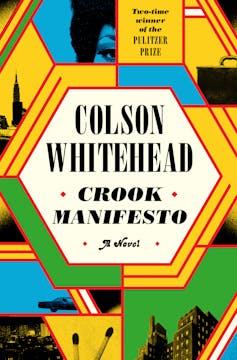
But Crook Manifesto confounds expectations only insofar as it is unprecedented for Whitehead to repeat himself. The novel is a sequel – a follow-up to his 2021 heist novel Harlem Shuffle, and the second instalment of a planned crime trilogy centred on Ray Carney, a furniture dealer in mid-20th-century Harlem, who fences stolen goods on the side.
Skipping forward a few years from Harlem Shuffle, which spanned 1959-64, Crook Manifesto begins in 1971. Carney has been out of the game for several years. He wants his wife and kids to enjoy the stability he was denied as the child of career criminal “Big Mike” Carney.
Ironically, he is tempted out of retirement as a devoted father wanting to reconnect with his moody teenaged daughter. He offers his services to former criminal associates in the hope of getting her tickets for a sold-out Jackson Five concert.
Whitehead is not only returning to the same genre and characters; he is repeating himself structurally. Like Harlem Shuffle, Crook Manifesto is divided into three parts, each of nine chapters. Whitehead has spoken of these sections as novellas: Ringolevio is set in 1971, Nefertiti T.N.T. in 1973, and The Finishers in 1976.
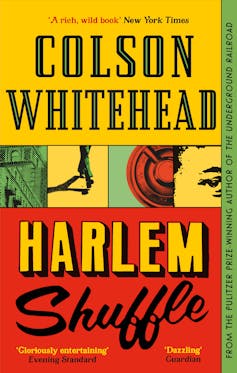
There is something of a mechanical exercise about this. It is like someone laying out a train set, instead of letting the story take shape from its own internal momentum. Stylistically, too, there is something flat about Crook Manifesto. Compared with Harlem Shuffle, there is less reliance on flashbacks and second-hand storytelling, which should make the unfolding action more immediate and gripping. But a sameness of pace and tone gets in the way. The prose rhythms are consistent across passages of action and contemplation. Measured compound sentences and run-ons alternate with shorter pithier statements (and the odd parenthetical aside) regardless of what is happening.
The problem is especially marked in the first novella. Carney agrees to pick up a parcel of jewels for Munson, a corrupt white cop, in exchange for the concert tickets, only to find himself an accomplice as the unhinged Munson embarks on an increasingly violent spree. These chapters are action-packed, but the prose fails to generate a sense of urgency or escalation.
Here, for example, is Carney compelled to keep watch as Munson storms a nightclub:
Carney didn’t believe Munson would start shooting up the joint but he’d certainly hurt someone if they stepped to him. Others came to the same conclusion, as evidenced by the stampede that boiled forth after [Munson] went inside.
When Carney sees a man shot “once in the chest and twice in the head”, his next thought is:
Three more holes in the Frigidaire; they were going to have to replace it.
Such juxtapositions are, of course, meant to be humorous, but they make what should be moments of heightened tension seem strangely inert.
This might be interpreted as an index of how easily and naturally Carney slips back into the world he has tried to leave behind. After all, an ironic evenness of tone is common in “hardboiled” crime writing. It is a means to convey the equanimity of hardened crooks and cops in the face of bloodshed. For these characters, violence is so normalised that the prose needn’t skip a beat.
But this doesn’t quite work for Carney, who is haunted by the prospect that he has inherited his father’s criminal tendencies, and whose tenderness for his family has been a motive for keeping out of trouble.
There is the odd stylistic sally towards a nightmare surreality, but the placement seems arbitrary. In one passage in the second novella, the gloomy enforcer Pepper (reprised from Harlem Shuffle) pursues another man “like a mean gust between skyscrapers”, while “family pictures jump off their nails” and “time slow[s] down for the eyewitnesses to apprehend what was about to transpire”.
It is unclear why this incident warrants such figurative extravagance, when other more cataclysmic acts of violence are rendered in the novel’s base style.
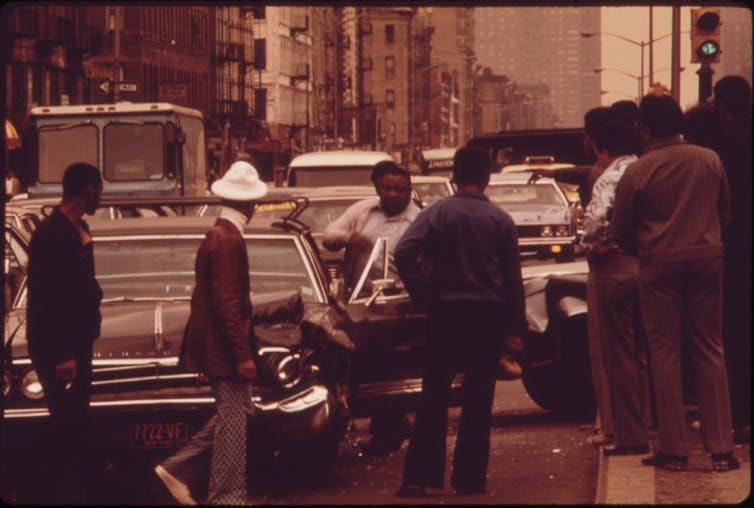
Read more: Jean Toomer’s Cane at 100: the 'everlasting song' that defined the Harlem Renaissance
A period piece
Indeterminate focalisation is a problem throughout Crook Manifesto, but above all in Part Two, which centres on Blaxploitation filmmaker Zippo and the surly Pepper, who is hired to work security on Zippo’s latest production. The point of view wavers between these two characters, but never deeply inhabits them, drifting back into a kind of arms-length omniscience to no apparent end.
Nor is there much idiomatic variation between the Zippo and Pepper sections and the earlier sections focalised through Carney. Pepper’s outlook tends to be more black-and-white and pessimistic – “every day white people ain’t killed you yet is a win”, he reasons. But the third-person rendering of his musings tends to dilute this contrast. Carney and Pepper even seem to notice the same kinds of things: watching Carney’s wife Elizabeth twist an ice tray, Pepper recalls hearing that “these new plastic ones were better than the metal ones with the lever, but he wasn’t buying it”. Whitehead presumably couldn’t resist the opportunity to show off his research into period detail.
Crook Manifesto confirms a trend in Whitehead’s recent fiction away from pastiche and counterfactual play. The Underground Railroad fantastically turns the historical network of transport routes and safe-houses that aides runaway slaves from the South into a literal railway, in what otherwise reads as deeply researched historical realism, whereas The Nickel Boys (2019) is pretty much “straight” historical fiction, drawing on the documented horrors of a Florida reform school.
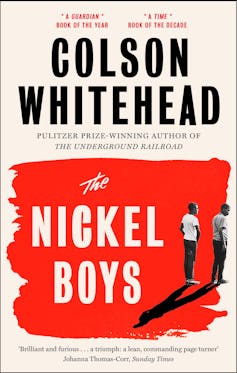
With Harlem Shuffle, Whitehead says he “wanted to make a real, authentic period piece”. The documentary urge persists in Crook Manifesto. Born in 1969, Whitehead says he has some early memories of Carney’s Harlem neighbourhood in “the gritty, tense early ’70s”, but his detailed knowledge of the period is largely second-hand. He admits that for Carney’s furniture business he did much of his research on Pinterest, browsing for vintage advertisements and catalogues. YouTube furnished footage of Harlem street life.
The level of detail in Crook Manifesto’s scene-setting is certainly impressive, but you sometimes get the sense that Whitehead is more concerned with accuracy than atmosphere. The novel is crammed with references to period clothing, appliances and, above all, furniture – but many of the descriptions feel wooden (so to speak).
This is partly because the visual is privileged over other kinds of sensory information. An old sofa “look[s] diseased”, but doesn’t reportedly smell bad; nor are the distinctive odours and textures of new, synthetic materials like polyurethane rendered. Even a segment dealing with rival chicken joints is largely bereft of cooking smells, sizzling, sticky surfaces and flavour.
This visual bias extends beyond setting to events: we get the choreography of violent encounters, but they tend to be soundless and painless. When Carney faces a fire with “black waves” of smoke, there is no choking or squinting; instead, “the scene freez[es] in Carney’s vision”.
Read more: In The Candy House, Jennifer Egan delivers an inventive novel for a digital age
A time-lapse of urban decay
The novel’s third and final part brings Pepper and Carney closer together, when Carney hires Pepper to help him track down the firebomber who almost killed the son of one of his tenants.
Meanwhile, New York City is in flames and falling to pieces around them. Crook Manifesto is a time-lapse of urban decay. By 1976, papers across the country were “informing everyone that the Big Apple was off-limits, busted, and dangerous”. The US bicentenary coincided with the doldrums of the mid-1970s, when a fiscal crisis made New York City infamous as “Fear City”. Municipal workers, including fire-fighters and waste workers, were laid off in the tens of thousands, leading to mass demonstrations, and creating ideal conditions for crime waves and arson, especially in poorer, mostly Black boroughs.
Carney’s associate Pierce argues that New York’s problem is not so much “arson” as “years of shitty urban planning”. But Carney “like[s] his bad men skulking about with their cans of gas”. He sees the emphasis on systemic failure as a “cop-out”. Readers are clearly meant to see the limitations of Carney’s narrow view, without necessarily dismissing his emphasis on individual moral responsibility.
Politically, this crook has no manifesto. At the novel’s outset, Carney is already weary of his daughter teensplaining racial politics through truisms cribbed (he assumes) from Black Power pamphlets. To explain the difference between the Black Panthers and the more radical Black Liberation Army to his son, Carney suggests that “reform is like stain-proof upholstery”, whereas “the convertible sofa is revolution”.
But Carney favours neither. His politics, or lack thereof, can be summed up in the idea that everything – business, the police, corporations, politics, the US – is a racket (an idea already explored in Harlem Shuffle). There is “always another deal to be made”.
Big-picture pronouncements
In making his protagonist a man on the take and on the make, and a man who has experienced racism but does not present as oppressed, Whitehead is giving himself a break from the gravity of The Underground Railroad and The Nickel Boys, where the moral heavy-hitting meant he “couldn’t tell as many jokes”.
In a different novel, we might expect the 1976 bicentenary to occasion more bitter reflections on the irony of associating 1776 with liberty and independence. Carney is mainly concerned with how to cash in on the marketing opportunities the bicentenary presents, though he does wryly imagine using the slogan “TWO HUNDRED YEARS OF GETTING AWAY WITH IT”.
Yet, here and there, there are passages where the narration lurches away from Carney’s narrow cynicism to offer big-picture pronouncements on the mood of the city and the ways of the world. Near the beginning of Part Three, readers are informed:
The city was being tested. It was always being tested and emerging on the other side in a newer stronger version for having been laid low, but everyone forgot that from time to time and so they were quite distressed by the latest manifestation. Distressed by the crimewave, which was very alarming […]
This is unwieldy prose, heavy-handed in its telling not showing, though the suggestion of a collective New York viewpoint, transcending the city’s deep divisions, might have been interesting were it more developed.
The final section of Crook Manifesto raises the emotional stakes, as Carney’s investigations with Pepper expose his family to danger. His anxieties are rendered with all the subtlety of a Molotov cocktail: “It had been a long time since bad men had threatened to steal his life from him, take Elizabeth and the kids from him.”
Whitehead is supposed to be “incapable of writing a bad book”, but he is more than capable of writing a cheesy sentence. Too many lines are wannabe aphorisms. “Crooked stays crooked and bent hates straight” furnishes the epigraph for Part One (all three parts are introduced with a limp self-quotation). You’ll get better prose from some of the crime writers who inspired Whitehead – such as Chester Himes, who wrote much of his fiction from prison. Compared with Himes, Whitehead is playing air guitar when he riffs on “the straight and narrow” as “a philosophy and a territory, a neighborhood with borders and local customs”.
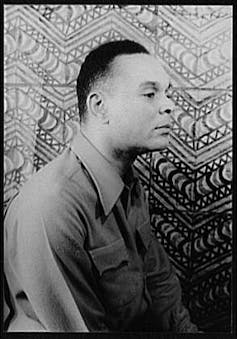
You will also cop more overt misogyny (along with more sex, drugs and other vices) from Himes and his ilk. Carney is no dope fiend or sex pest. The trade-off is that Crook Manifesto gives its female characters little to do.
Zippo’s film project in Part Two has a strong female lead on paper, but its star, Lucinda Cole, is introduced only to go missing; her suspected abduction is the main driver of this novella’s plot. When it comes getting a piece of the action, it seems women belong in the kitchen, as we learn in a subplot involving the rivalry between the chicken restaurants of Viola and Lady Betsy, which is reportedly “as urgent as any mob war, with casualties measured in customers lost instead of soldiers fallen”.
Carney’s family generally remain in the background. They are what is “at stake” in his risk-taking. Harlem Shuffle took more interest in Carney’s wife Elizabeth, depicting her role as a travel agent devising safe itineraries for Black travellers, including Civil Rights activists, in the South. In Crook Manifesto, Elizabeth’s career has plateaued. From the indirect reports of her work on an old friend’s political campaign in Part Three, she presents less as the socially engaged antidote to Carney’s cynicism than a naive pawn:
Oakes was crooked, but Elizabeth didn’t know that. She believed what was set down in the Women for Oakes pamphlets: that change was coming.
It is Carney, not Elizabeth, who suggests she start her own company – with his financial backing:
He didn’t have that much money put away but he knew where to get some. What else was an ongoing criminal enterprise complicated by periodic violence for, but to make your wife happy?
I guess we’re meant to chuckle?
For scholar Adam Kelly, novels such as Whitehead’s Zone One and The Underground Railroad exemplify “the genre turn in the work of writers typically recognized for their high literary ambitions and achievements”. Unfortunately, Crook Manifesto succeeds neither as literary fiction nor as an entertaining crime caper.
Whitehead’s first effort at the heist novel in Harlem Shuffle wasn’t half bad, but Crook Manifesto is all over the furniture shop. It would be profoundly unsuccessful as standalone novel, but has a bit more purchase, as the midpoint of the trilogy, for readers already invested in Carney’s fortunes. When the third instalment comes out, completists will go along for the ride.
Hopefully, Whitehead will then go back to surprising us, and we can all go back to repeating our lines about his endless versatility.
Sascha Morrell does not work for, consult, own shares in or receive funding from any company or organization that would benefit from this article, and has disclosed no relevant affiliations beyond their academic appointment.
This article was originally published on The Conversation. Read the original article.







